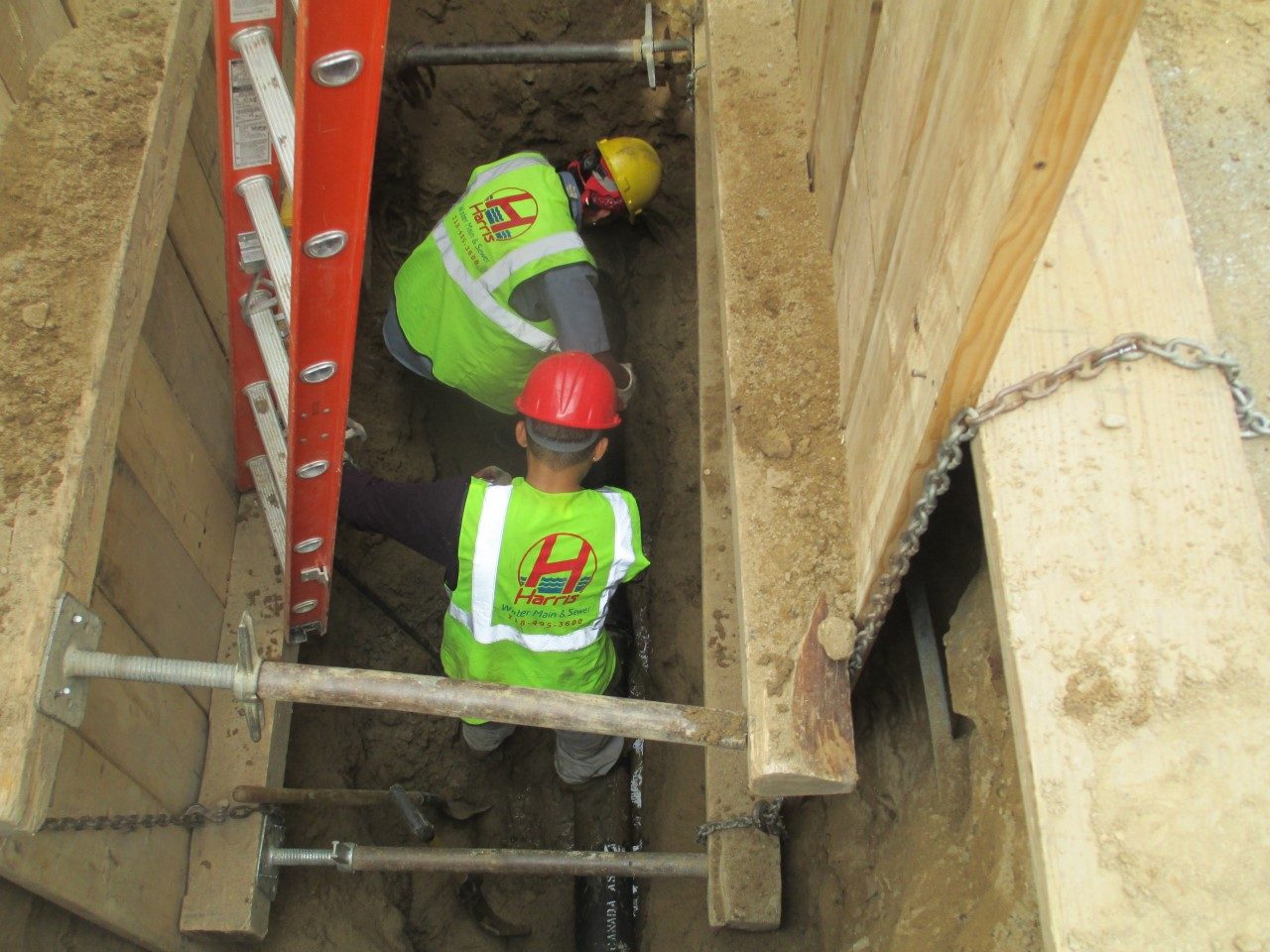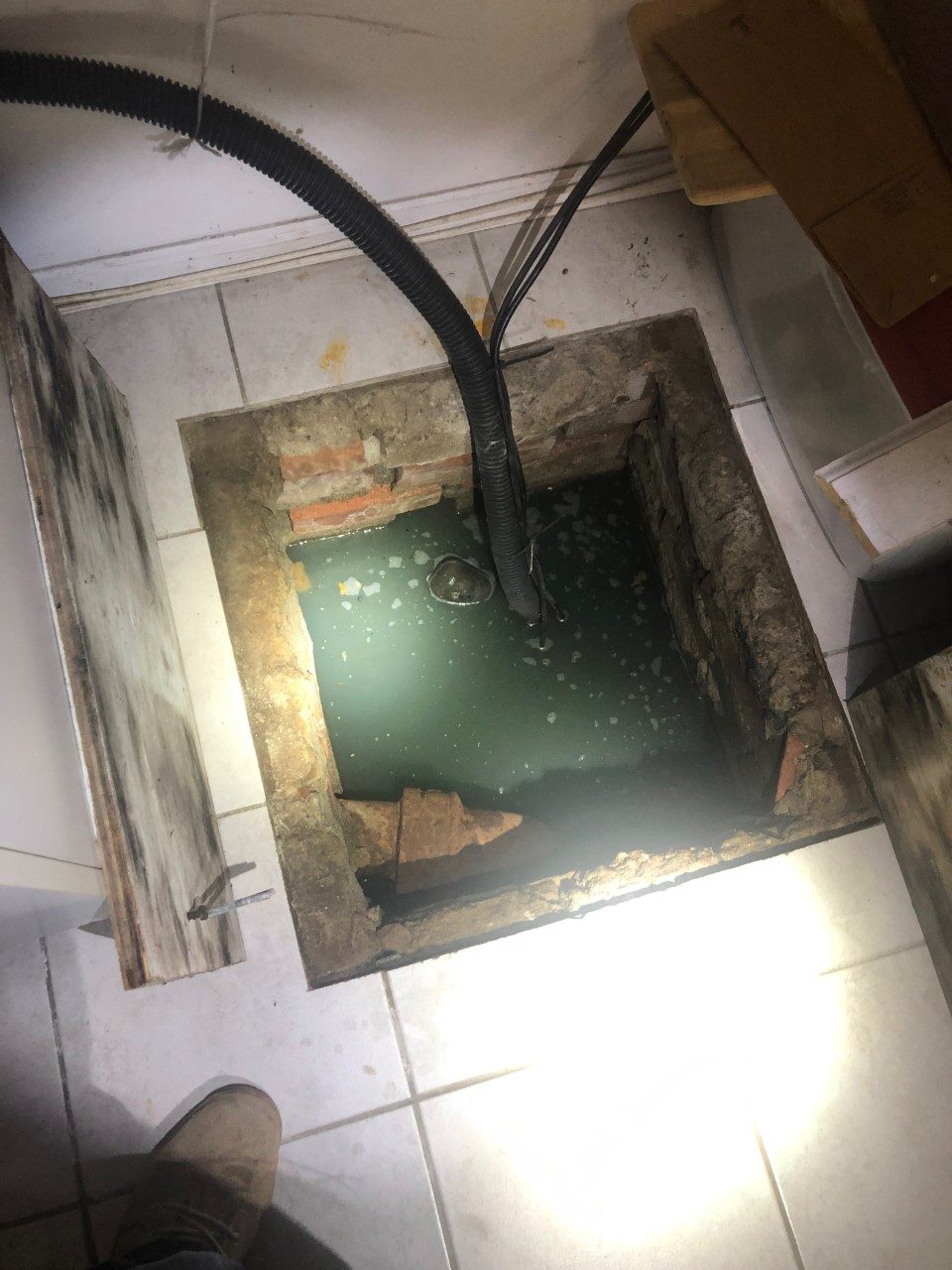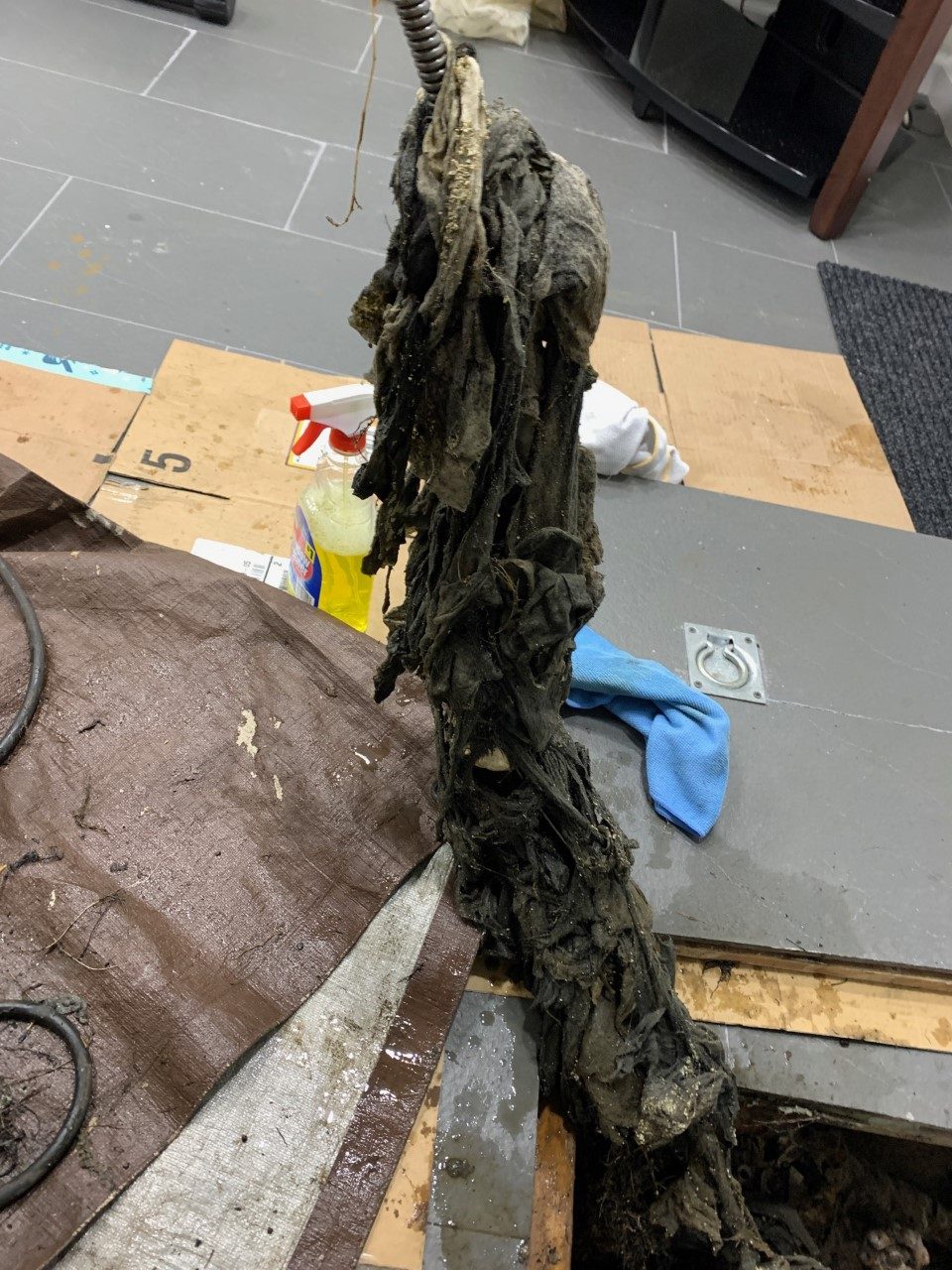If you are experiencing water coming out of your main sewer trap, it is most likely a result of a clog in your sewer drain. It is also common for water to come out of plumbing fixtures in your basement such as a shower drain, toilet or slop sink.
A sewer drain clog are often found in the basement, as these are the fixture nearest to the main sewer line that exits your home out to the street. If you don’t had any plumbing fixtures in your basement, you may not experience a backup until it is bad enough that it you have issues with fixtures on the first or second floor of your house.
In most cases, the sewage backup will come out of the main house sewer trap—which is usually on the inside foundation wall of your house, and is also the first point of entry for your plumbing system before it exits out to the street. In rare cases, your house may not have a trap or the cleanout plugs may be on so tight that the sewage backup flows further into the internal plumbing system until it reaches another drain, such as your shower or sink.
If the drain clog is on the inside of the house, your drain cleaner can access one of the traps or drains in your home and snake out the clog with a standard sewer snake. A few common objects that may cause your sewer back up are:
- Sanitary napkins
- Wet wipes
- Paper towels
- Or any other object that is not intended to be run through your plumbing system.
If the sewer drain clog has been determined to be on the outside of your house, the drain cleaner will access your main sewer line from the trap on the inside of your foundation wall. They will use the same method to clear the line as if they were snaking the piping on the inside of your home. In the event that the drain cleaner encounters an obstruction, they may use another tool to assist in clearing the line.
A water jet is used to remove any kind of debris or grease that is stuck in the line and must be removed with pressure. The risk with a water jet is if the pipe is broken, then the pressure can actually exacerbate the problem and make a small break even larger.
If the sewer line clog is still taken care of via water jet, you may want to use a sewer video camera to investigate the inside of the pipe and see what is going on. Beware that you may find a few issues you wish you had not including a belly of the pipe, a cracked or disjointed pipe, or even a collapsed pipe.
In any of these scenarios, you would be required to complete a sewer repair or a main sewer line replacement. It is best to discuss the findings of your problem with a licensed water main and sewer contractor to assist with the decision making process. For example, if the pipe is severely damaged in one location and the remainder of the pipe is old clay pipe you may want to consider a complete main sewer line replacement instead of a partial repair.
You may ask why one would replace the entire sewer line as opposed to a partial repair if only a small portion of the pipe is damaged and causing the backup. In this case, it is important to analyze the future costs as well as for the integrity of the pipe. If your licensed plumber projects a secondary problem in years to come it is always best to replace the entire sewer at once and avoid multiple charges for repairing your sewer line over the years to come.
A main sewer line replacement is a pretty standardized process and if the sewer is backing up it can be completed on an emergency basis including permits, excavating, installing the pipe and final inspections from the city.
If you have any questions regarding a sewer clog or main sewer line replacement, it is best to contact a licensed plumber who specializes in sub sub-surface water main and sewer installations.























